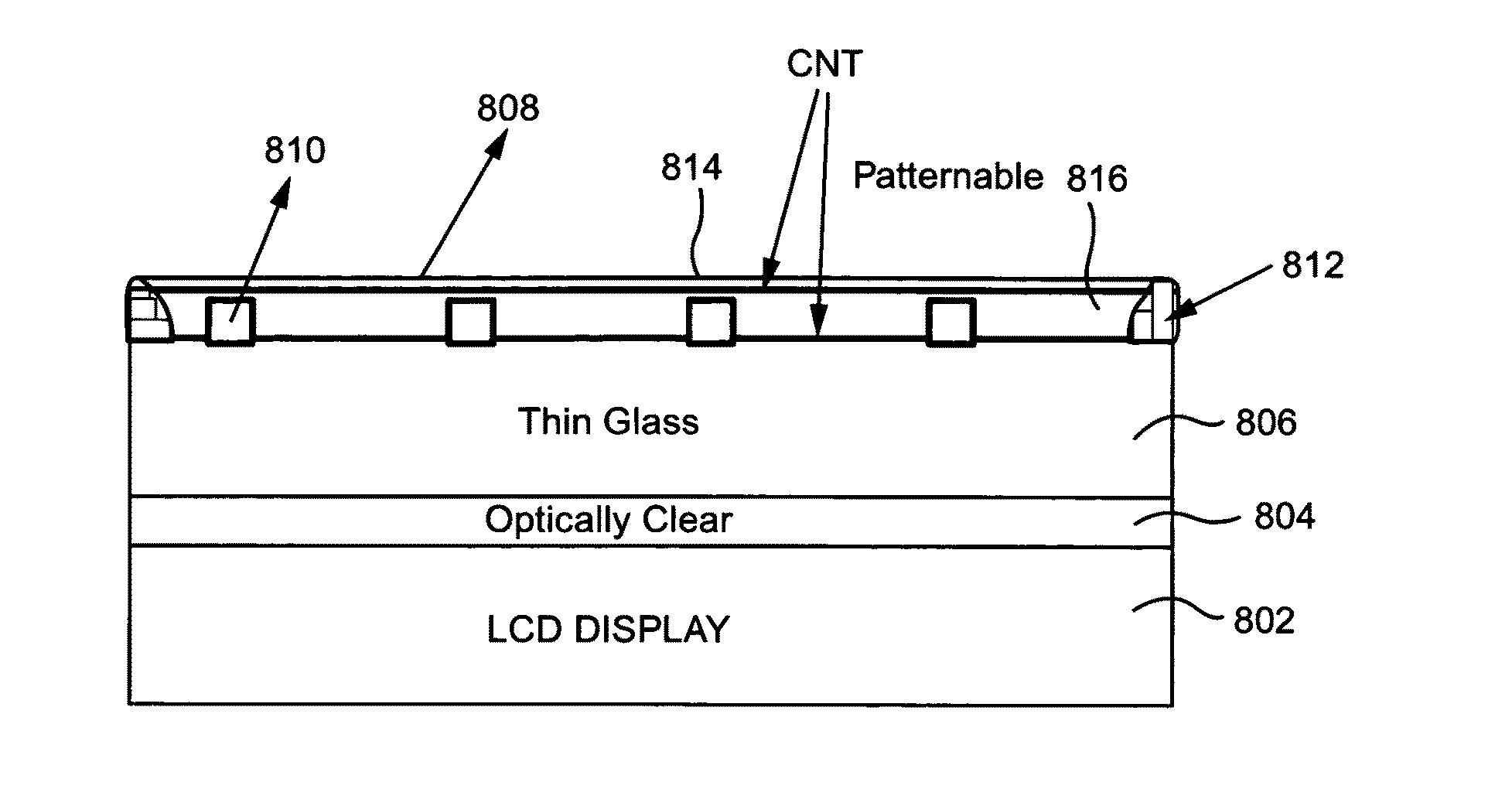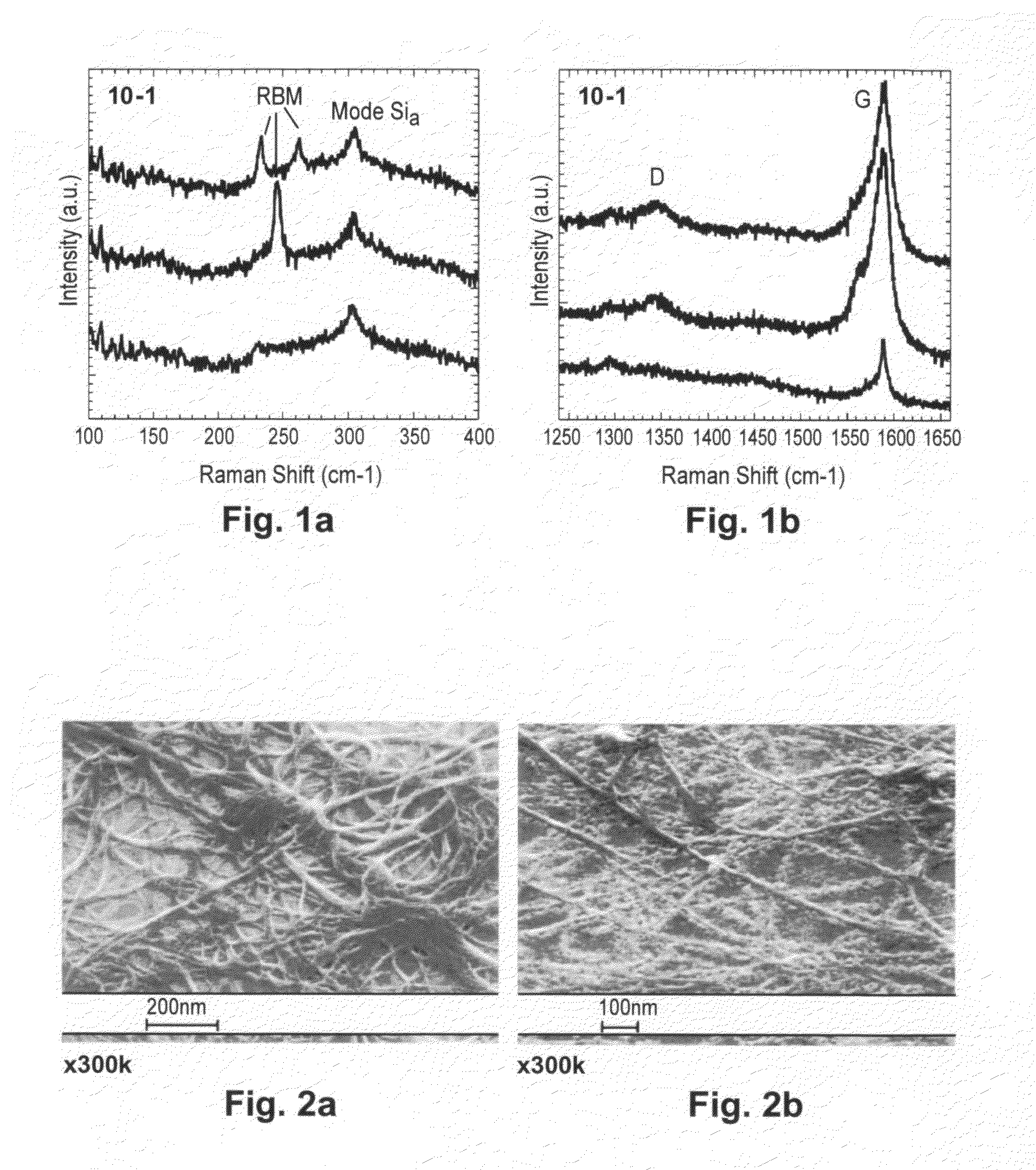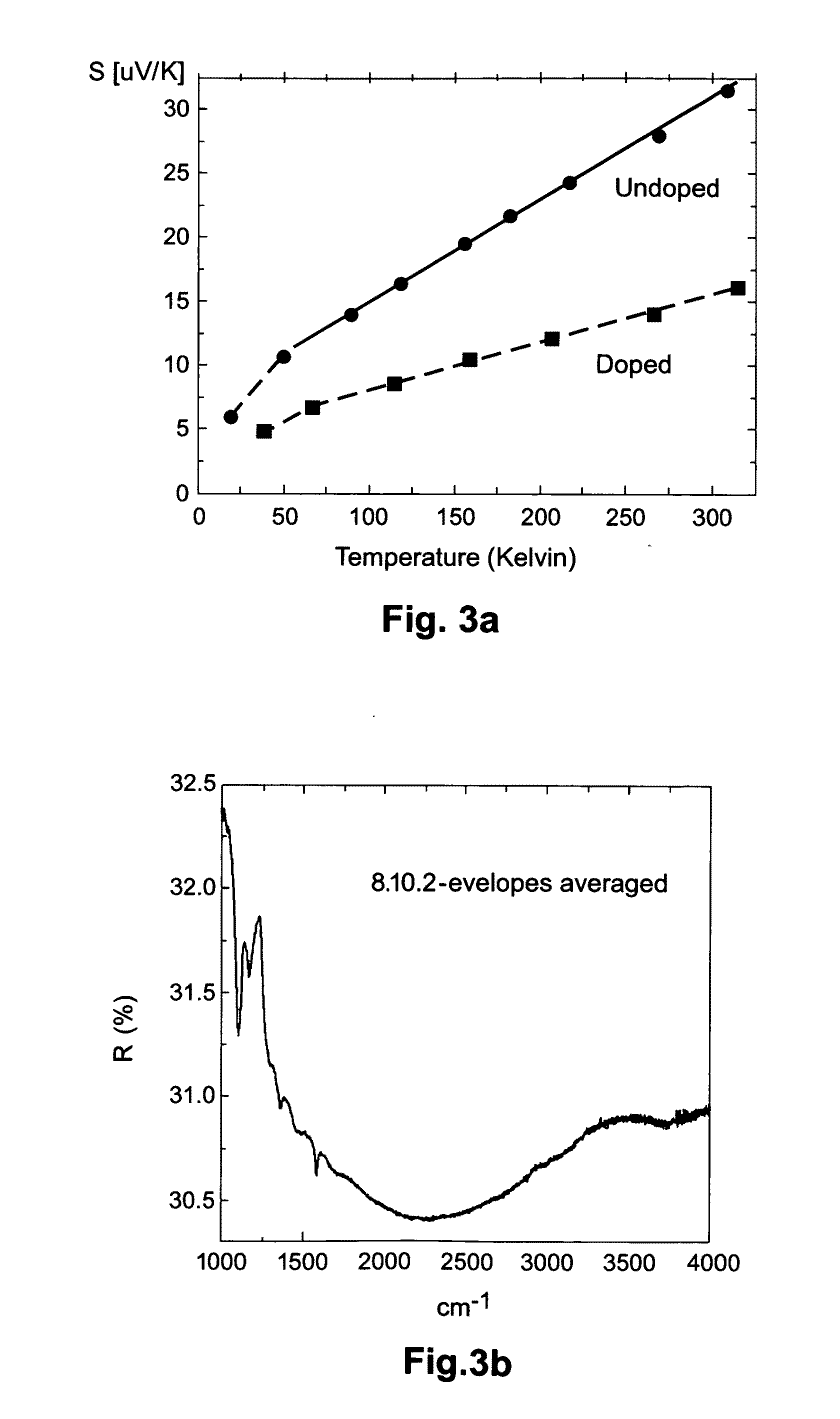Large-area transparent conductive coatings including doped carbon nanotubes and nanowire composites, and methods of making the same
a technology of transparent conductive coatings and nanowire composites, which is applied in the direction of coatings, inks, nano-carbon, etc., can solve the problems of less than 90 ohms/square sheet resistance and better than 90% transmission, and achieve the effects of improving electrical, optical, mechanical and chemical properties, reducing the number of conductive coatings, and improving the performance of the coating
- Summary
- Abstract
- Description
- Claims
- Application Information
AI Technical Summary
Benefits of technology
Problems solved by technology
Method used
Image
Examples
Embodiment Construction
[0030]While thin films made from random meshed networks of carbon nanotubes have been successfully deposited on various transparent substrates, further improvements are necessary before they can be used in photovoltaic devices and other electronic applications such as, for example, OLEDs. Certain example embodiments, however, relate to solution-deposited smooth thin films made from chemically altered double wall nanotubes and composites that have stable sheet resistances below 100 ohms / square at visible transmittance levels of above 83.5%. As described in detail below, the effect of modifying the carbon nanotubes can be verified using thermopower vs. temperature measurements, and changes in optoelectronics properties of the altered films related to weathering may be studied via using SEM, XPS, IR / Raman and spectral transmittance measurements. Certain example embodiments also relate to applications of doped films on glass, namely, capacitive touch sensor electrodes and functional coa...
PUM
 Login to View More
Login to View More Abstract
Description
Claims
Application Information
 Login to View More
Login to View More - R&D
- Intellectual Property
- Life Sciences
- Materials
- Tech Scout
- Unparalleled Data Quality
- Higher Quality Content
- 60% Fewer Hallucinations
Browse by: Latest US Patents, China's latest patents, Technical Efficacy Thesaurus, Application Domain, Technology Topic, Popular Technical Reports.
© 2025 PatSnap. All rights reserved.Legal|Privacy policy|Modern Slavery Act Transparency Statement|Sitemap|About US| Contact US: help@patsnap.com



